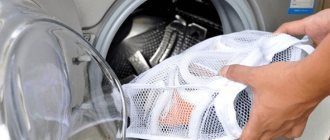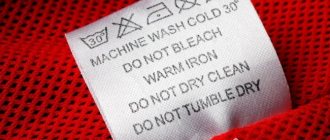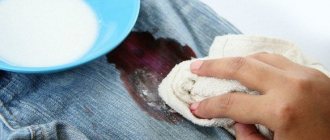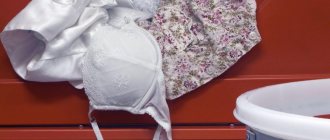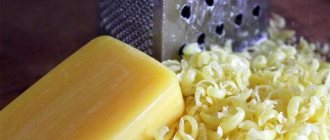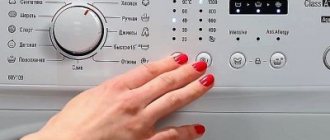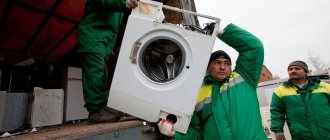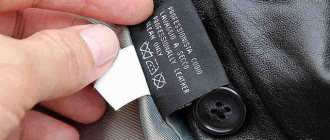This has happened to each of us at least once: our favorite jumper shrank after washing, whitish creases remained on the dress after ironing, and the lace of the bra lost its elasticity. To prevent this from happening again, do not rush to cut off and throw away the tags on your clothes immediately after purchase - and carefully study our guide to markings.
Labels on clothes sometimes look like a multi-volume essay in an incomprehensible language with hieroglyphic symbols and advice that we do not always follow. Agree, we don’t read the labels on some things at all - and sometimes we pay dearly for it. It is always better to estimate the cost of an item in terms of the number of times it will be worn: a dress for 10,000 rubles, worn 10 times, is cheaper than a dress for five, worn only once. So it's a shame to lose a great item just because we threw it in the washing machine without reading the instructions.
In order not to suffer from the fact that after washing a new branded jumper has become several sizes smaller and is now suitable only for a child, we will tell you how to read the label and use these rules.
Wash
Can't be washed
Typically, this icon is found on products made of natural satin, velvet, velor - and is adjacent to the “Dry Clean” icon.
We love natural silk fabrics for their pleasant matte shine, which is formed due to the fact that the fibers have a prism in cross-section. And water deforms the fibers, and the shine goes away, even if the dyeing of the fabric is permanent and the color is preserved.
Pile fabrics - velvet, velor - often cannot not only be wetted, but also ironed - only steaming will do. Washing and ironing against the lint leads to the formation of bald spots.
Loose fabrics - tapestry, tweed, as on Chanel jackets - if they are made of natural fibers and not polyfibers, they are always glued so as not to unravel under load, and the glue may not survive contact with water. Therefore, in order for such a thing to serve for a long time, dry cleaning again.
Both pleating and crash - the effect of crinkled fabric - do not like water. After treatment with water, they may come apart, for example, on silk and other natural fabrics.
Handwash
The item can only be washed by hand, at a temperature of 30–40°C, depending on the material. When washing by hand, use a small amount of detergent and gently rinse and wring out the items. Wash colored clothes quickly, without leaving them damp for a long time.
Washing machines have a hand wash mode: rotation of the drum is minimized, it only dangles from side to side, and spinning is practically absent or takes place at the lowest speed. This mode can be used when washing suit trousers, clothes with embroidery and appliqués, as well as fabric shoes. Even underwear with such a mark can be washed in a machine on the appropriate setting - except that it’s better not to take risks with thin lace.
Wash as normal
Basin with temperature indication - wash normally at the appropriate temperature. The maximum temperature is 95°C - such things can be boiled if necessary. 60°C is most often found on cotton or synthetics. The 40°C mode is suitable for colored items that cannot be boiled (cotton, polyester, synthetics). 30°C - most often found on woolen products; for them, it is usually worth choosing special products with neutral Ph.
Sometimes the temperature is indicated by dots: one dot is the minimum temperature, 30°C, two - 40°C, three - 60°C.
About the face Secret signs: what do the symbols on cosmetics packaging mean?
Delicate wash
The line under the basin indicates that you should wash at low speed using delicate programs (low rinse and short spin time).
You can load the washing machine with such things only 2/3 full. If you want to wash this item by hand, use plenty of water and rinse the item well.
Dryer Cloths
Shutterstock
These dryer sheets are made from natural materials and impregnated with various pleasant aromatic compounds. They are completely organic and completely decompose after three weeks without harming the environment. They are intended specifically for drying clothes, removing unpleasant odors and imparting aroma to the laundry. But despite this, they can damage the dryer.
Organic residues accumulate on the dryer filter, which ultimately reduces its effectiveness and makes it difficult to remove lint due to a sticky film stuck to part of the lint. Additionally, dryer sheets can also cause mold and mildew due to the water that gets trapped in the dryer, accumulating over time.
Drying and spinning
Cannot be dried
If you find such an icon on the tag, then under no circumstances should you dry this item. Typically, this designation is used in conjunction with the “cannot be washed” symbol.
Normal drying
The item can be dried in any way, including in a dryer or in a washing machine with dryer. As in the case of a basin indicating washing, dots can be drawn in a circle to indicate the drying temperature (the lower it is, the longer the cycle), and a line under the icon indicates a delicate drying mode and spinning at a low speed.
Spin
This sign prohibits twisting or squeezing the item by hand or in a machine. It should be hung on hangers or laid out on a horizontal surface immediately after washing.
This sign indicates the need for vertical drying without spinning.
This one simply recommends vertical drying. You can squeeze out such a thing.
And this one talks about horizontal drying, otherwise the fabric will deform and stretch. Typically, such drying is recommended for knitwear and wool.
Trends Old is the new black: a detailed guide to vintage clothing stores in Moscow
Sun drying
This sign indicates a ban on drying in direct sunlight. Clothing with this symbol on the label should only be dried in the shade. This is usually white fabric, which turns yellowish when exposed to sunlight, as well as brightly colored clothing that can fade.
What can you dry in a tumble dryer?
Cotton, synthetic or semi-synthetic and many other mixed fabrics can and should be machine dried. After treatment with warm air, these materials acquire a pleasant softness to the touch. Many products are ironed during the drying process and are immediately ready for use, without ironing. This machine procedure is ideal for bed linen, bedspreads, terry towels and robes, blankets, pajamas, casual wear, etc.
If your daily clothes are mostly jeans and sports T-shirts, then this dryer is definitely for you. There are models that have a special metal basket in which you can dry soft toys, textile bags and even some types of shoes, etc. If you are going to dry just such things, look for a model with special additional accessories.
Ironing
Ironing as normal
You can safely iron the item, nothing will happen to it. Dots can also be drawn in the iron - temperature indicators:
1st point: maximum ironing temperature 110°C, preferably without steam. Most often these are synthetic fabrics: polyacrylic, polyamide, polyester, acetate. Manufacturers also recommend ironing these items from the inside out.
2 points: maximum temperature 150°C. Cotton, silk, wool, polyester, viscose.
3 points: maximum temperature 200°C. Suitable for cotton, linen, fabrics that are best ironed inside out or through the fabric.
No ironing
Fabrics with this symbol will quickly deteriorate or change their shape due to the high temperature of the iron. Typically, such a recommendation is present on the label of silk, satin and satin clothing, and so that we do not forget about this, manufacturers make sure that such labels cannot be cut off.
Trends New masculinity: why men fell in love with pink
Steam cannot be used
The icon means it is prohibited to use steam when ironing. It may damage the fabric or leave marks. At the same time, it is possible to steam such things with a special device.
Temperature selection
If you care about the safety of the item, then there is no need to talk about high temperatures when washing. It is better not to install above 40 degrees. For particularly delicate fabrics, 30°C water is preferable.
Additional Information! Windbreakers designed to protect the body from rain and wind can be made from different fabrics. The composition of the material dictates the choice of washing temperature.
- Polyester is a material created artificially from the melt of polyester fibers. It has excellent weather-resistant qualities, durability, does not allow rain and wind to pass through, and does not wrinkle. But in accordance with the nature of its origin, it is afraid of high temperatures. Hot water can “melt” the structure of the fabric, causing the item to become deformed and shrink in size. So in this case, wash at a maximum of 30 degrees.
- Nylon is also a synthetic material obtained through chemical manipulation of molecules. It is older and stronger than polyester. Holds paint better. However, it is not resistant to high temperatures: it wrinkles and stretches greatly. Therefore, it is necessary to wash at no more than 40 degrees.
- Corduroy and cotton. Windbreakers made from these materials contain natural fabrics. They are warmer and can withstand washing at 60 degrees.
When washing a jacket in a machine, you should carefully study the composition of the fabric: increasing the percentage of natural fibers increases the temperature of the water.
Bleaching and dry cleaning
Items with this symbol cannot be dry cleaned.
Can be safely chemically and dry cleaned. Often this designation is present on wool, leather, silk or suede clothing. If there is a letter inside the circle, it tells you which chemicals are acceptable for cleaning the fabric. These can be the letters A (any substance), F (cleaning using petroleum products and trifluoro-trichloroethane), P (cleaning using perchlorethylene, chlorinated solvents and white spirit). And the line under the circle will tell the dry cleaning worker that the treatment should be delicate.
Items with this symbol on the label can be bleached using any bleaching substances. On old things there was a symbol with the inscription cl (chlorine) inside - it is allowed to bleach with chlorine-containing substances. Now, if you meet it, it will only be crossed out. But more often, the ban on the use of chlorine bleaches is indicated by a black triangle with a line through it.
Crayons and candies left in children's clothing pockets
Shutterstock
Of course, things get a lot more complicated when you have kids who leave God knows what in their pockets. Well, who, tell me, has time to rummage through every pocket when small children are running around underfoot? However, as tempting as it may be to just throw all the clothes you've collected off the floor straight into the wash, it's not such a good idea.
If there are easily meltable items in your laundry, such as candy, wax crayons, or chewing gum, they will not only leave stains on your clothes, but they may also cause a fire. Considering that children are already a potential fire hazard, both literally and figuratively, there's no need to add a "dryer fire" to the long list of fires that need to be put out. We advise you to take the time to carefully check children's pockets and take out all the prohibited items.
Labels
Some manufacturers do not use icons on clothing labels or duplicate them with text.
•Hand wash only - wash only by hand.
•Machine wash – you can use a washing machine.
•Wash separately - items with this designation must be washed separately from others. This is due to the nature of the material, which can fade or change color.
•Hot/Warm/Cold wash - wash in hot/warm/cold water.
•Do not wash - do not wash items with this designation under any circumstances.
Why some things cannot be machine washed
Most delicate fabrics lose their strength and elasticity when wet. The threads get knocked down and sometimes simply break from any mechanical impact. Such items are either cleaned by hand or sent to dry cleaning. No machine can wash things as carefully as the caring hands of the housewife.
But what about the special modes of hand and delicate washing, many will ask. They can really help out if you need to wash a bulky item. For example, silk bed linen or a wool blanket. But if the item is small (dress, scarf, underwear), then it would be right not to risk it and wash it by hand in a soapy solution. In this case, using a brush, rubbing the fabric and squeezing it is also not recommended.
By the way, the above gentle modes differ from regular machine washing only in that they use a lower water temperature (30–40 degrees), the spin is turned off and an additional rinse is turned on.
What are they needed for
Signs on clothes are a reliable guide for the housewife. Improper care gradually or immediately spoils the item, and even dry cleaning is not always able to help. To ensure that simple and delicate items last a long time and maintain their decent appearance, carefully read the manufacturer’s recommendations before purchasing and washing for the first time. What if your coat can’t be washed at all?
Where to look for signs on things
Labels are usually sewn on from the inside out. On trousers this is the area of the hips, belt or pocket, on shirts - the side seam, skirts and dresses - the hem. Also, strips of fabric with markings are attached behind the collar. Pictograms are international symbols; the manufacturer is required to indicate them on each textile product.
Tip The location of the label is not always convenient: it either shows through or rubs. In this case, save or photograph the label after cutting it.
